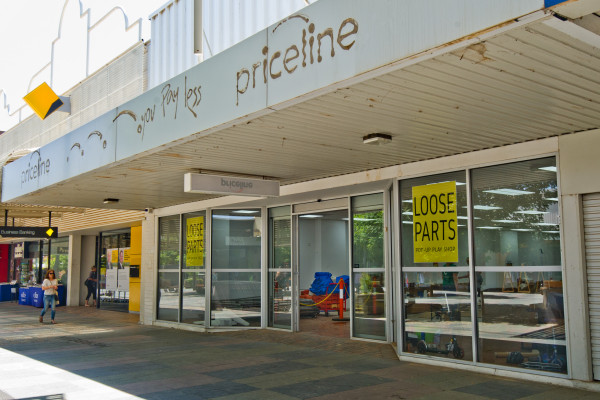A COUPLE of young guys walked into a local shop and asked to try on shoes.
Once they were fitted up for size, they gave the shoes back to the staff member, said “thanks for your help” and walked out the store, armed with all the information they needed to order the same brand name and size online.
These sorts of stories are commonplace if you talk to people in the retail industry.
The proliferation of online shopping is having a major impact, not just in Australia, but across the world.
It is an impact the newspaper industry can easily relate to.
It has been a brutal start to the year for Australia’s retail sector, with about 160 popular Australian bricks-and-mortar stores earmarked for closure in the first fortnight.
It started early on January 7 when it was revealed department store Harris Scarfe, which has an outlet in Mildura, was set to shut 21 stores across five states over the course of just one month after the retailer was placed in receivership in December.
Just days later McWilliam’s Wines, the country’s sixth-largest wine company, which had been run by the same family for more than 140 years, announced it had voluntarily appointed administrators.
Then it was popular video game chain EB Games’ turn, with the business confirming it was closing at least 19 stores across the country within weeks, while fashion chain Bardot is also planning to shut 58 stores across the nation by March.
Next it was announced that Curious Planet – the educational retailer previously known as Australian Geographic – would pull 63 stores across Australia after failing to find a buyer for the brand.
And news also broke that Jeanswest had entered voluntary administration, although its Mildura store is continuing business as usual.
It’s been described as a “retail apocalypse” and Mildura hasn’t escaped unscathed.
A number of smaller retailers also closed last year and our CBD has been left with a host of vacant shops.
High rents and rates seem a big part of the problem, but the issues are greater than that, and they are certainly not specific to Mildura.
As early as 2010, the United States began experiencing an accelerated decline in traditional bricks-and-mortar retailing. A study found that mall visits declined 50 per cent between 2010 and 2013, and they have kept falling every year since. By 2019 research by Coresight Research tracked 9302 store closings in the US, a 59 per cent jump from 2018.
So what do we do?
While it may sound simplistic, as a community that prides itself on being self-sustaining and supporting of each other in times of need, shopping local will make a difference.
It may be old-school thinking, but we should all place value in customer service.
Customers can’t be expected to treat local shops like charity cases, so therefore should expect prices to be competitive.
But if a pair of shoes that we have tried on in a local store costs an extra $10 or $20 compared to what they can be bought for online, then consider what it means to buy right then and there.
Spending that money here will go a long way to boosting this community’s economy and keeping locals in business, compared to purchasing them directly from an online warehouse that could be located anywhere from Melbourne to Beijing.
Every little bit will help.
The retail industry is experiencing its biggest growth slump in over two decades, according to ABS estimates. The meagre 0.2 per cent real growth in turnover through the year in the June quarter of 2019 is even worse than the sector’s through-the-year growth during the 2008 global financial crisis. Retail sales have dropped to levels not seen since the 1991 recession.
So the bottom line is that times are tough for many of our great local retail businesses in Mildura.
It’s time we all got behind them.








